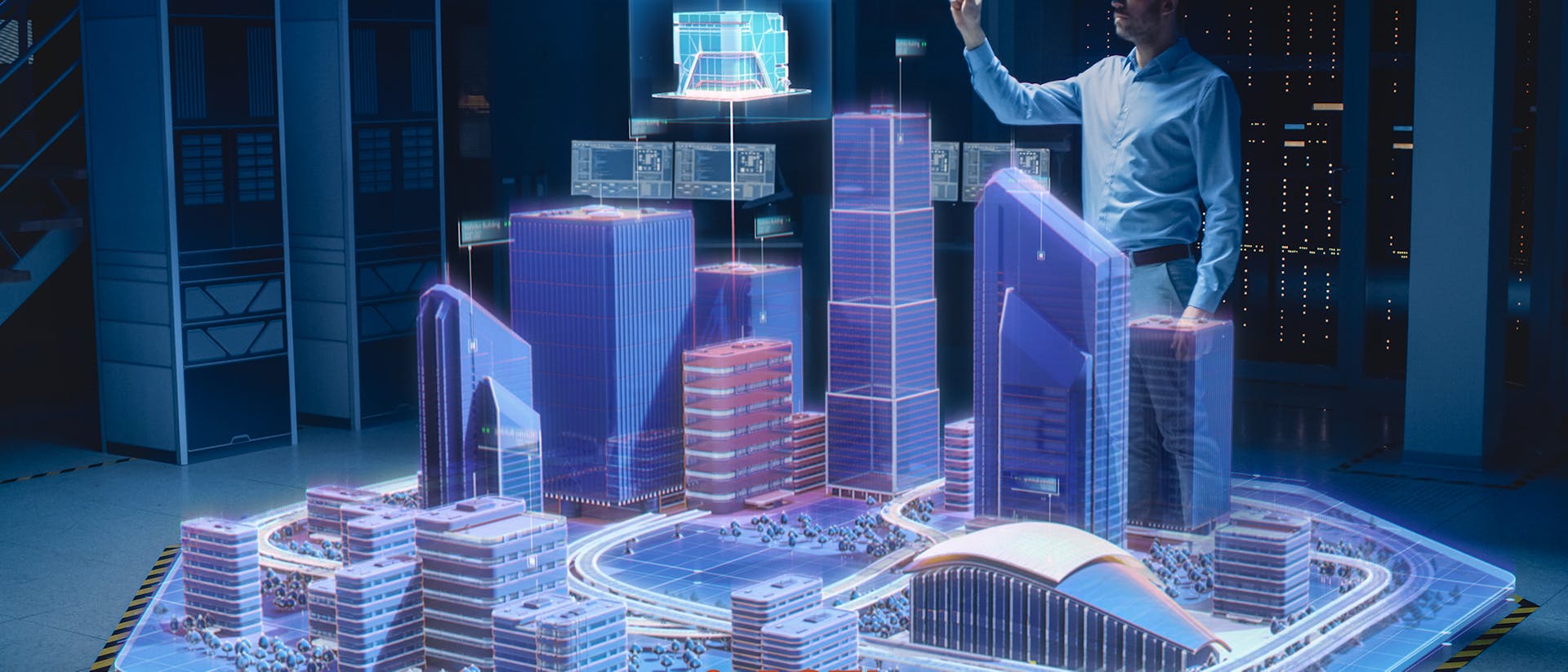
AR/VR Trends and Predictions for 2025 & Beyond: Charting the Future of Digital Realities
Augmented reality (AR) and virtual reality (VR) technologies have transitioned from futuristic concepts to integral parts of various industries. With an anticipated market growth from $30 billion in 2022 to over $520 billion by 2031, AR and VR are set to revolutionize sectors ranging from entertainment and education to healthcare and construction. The integration of these technologies is expected to enhance user experiences and operational efficiencies significantly, particularly through innovative solutions like STI Digital’s "STI Link."
Major AR/VR Trends for 2025 and Beyond
1. Integration of AI in AR/VR
Artificial Intelligence (AI) is enhancing AR and VR experiences, and this trend is accelerating. AI-driven advancements in rendering, tracking, and processing are making simulations more realistic and interactive. For example, in gaming, AI improves the realism of 3D characters and environments, creating more immersive experiences. In education and training, AI-powered AR and VR provide realistic practice scenarios for medical students and immersive learning experiences for school students. These developments are about more than just better graphics; they create dynamic, responsive environments that adapt to user interactions in real-time.
2. Impact of 5G on AR/VR
The rollout of 5G technology is poised to transform AR and VR by greatly reducing latency and boosting throughput. This advancement will allow for real-time interactions and experiences that were not feasible before. For instance, 5G can facilitate live, interactive training sessions in areas such as medicine or complex collaborative design and architecture projects. The high-speed connectivity offered by 5G will make AR and VR more practical and reliable for everyday use, expanding their applications and improving user satisfaction.
3. WebAR and Cross-Platform Applications
WebAR enhances accessibility to AR experiences by enabling users to interact with AR directly through their web browsers, eliminating the need for specific app downloads. This cross-platform compatibility simplifies user interactions and expands the potential audience. It guarantees consistent and smooth AR experiences across various devices and operating systems, promoting increased adoption and engagement.
4. Wearable AR/VR Devices
Wearable devices are increasingly common, with advancements in smart glasses and headsets at the forefront. However, this journey is still in its early phases. While there are some consumer concerns about comfort and usability, such as with the Apple Vision Pro, ongoing innovation is expected to resolve these issues. By the end of the decade, wearable AR and VR devices are likely to become a regular part of life, transforming how we interact with digital content and one another.
AR/VR in the Building and Construction Sector
STI Digital’s "STI Link" exemplifies the transformative potential of AR in the building and construction sector. By integrating all asset information within a Digital Twin, STI Link makes this data easily accessible through AR devices. This integration offers several benefits:
Streamlined Asset Management: A centralized, easily accessible repository for all asset information.
Enhanced Safety: AR can provide real-time safety information and alerts, acting as a reliable safety advisor.
Effective Training: Immersive, engaging training modules for operations and maintenance tasks.
Maintenance Efficiency: AR-guided maintenance ensures thorough and efficient task management.
Remote Operations: Enables remote monitoring and management of construction sites, enhancing flexibility and efficiency.
The Role of Major Companies in Shaping AR/VR Future
Major tech companies are pivotal in driving AR and VR advancements. Alphabet’s Google has partnered with Magic Leap to create immersive experiences that blend the physical and digital worlds. This partnership combines Google’s technology platforms with Magic Leap’s expertise in optics and device manufacturing, indicating a strong push towards innovative AR solutions.
Meta, the company formerly known as Facebook, is also navigating changes in its AR/VR strategy. In a recent email to owners of the original Meta Quest, Meta announced that the headset would no longer receive bug fixes or security updates. Released in 2019 as the Oculus Quest, this headset enjoyed over five years of operation before being phased out. Earlier this year, Meta similarly abandoned the Oculus Go. Moreover, Meta Quest 2 stock has been dwindling globally, with no signs of restocking, suggesting the imminent launch of the rumored Meta Quest 3S. This new model is expected to become the most affordable Quest headset, signaling Meta’s continued focus on making AR/VR accessible to a broader audience
Microsoft, another key player, has faced challenges in its mixed reality division. In June 2024, the company confirmed layoffs in this sector but remains committed to its HoloLens 2 headset, which has been on the market since 2019. Despite these setbacks, Microsoft continues to support HoloLens 2, underscoring its belief in the potential of mixed reality, particularly in enterprise and industrial applications.
Conversely, companies like Apple have recently slowed their AR efforts. Apple has suspended work on its next high-end Vision Pro headset, shifting focus to expanding the current model’s market reach. This highlights the challenges and fluctuating market dynamics even for industry giants.
Conclusion
The future of AR and VR looks promising, with significant advancements on the horizon that will impact various sectors. The integration of AI, the rise of AR avatars, the influence of 5G, and the accessibility of WebAR are set to redefine user experiences. For industries like building and construction, solutions like STI Link demonstrate how AR can enhance efficiency, safety, and training. As major companies continue to innovate and adapt, AR and VR technologies will become increasingly integral to our daily lives, setting the stage for a digitally enriched future.
Contact us for more information